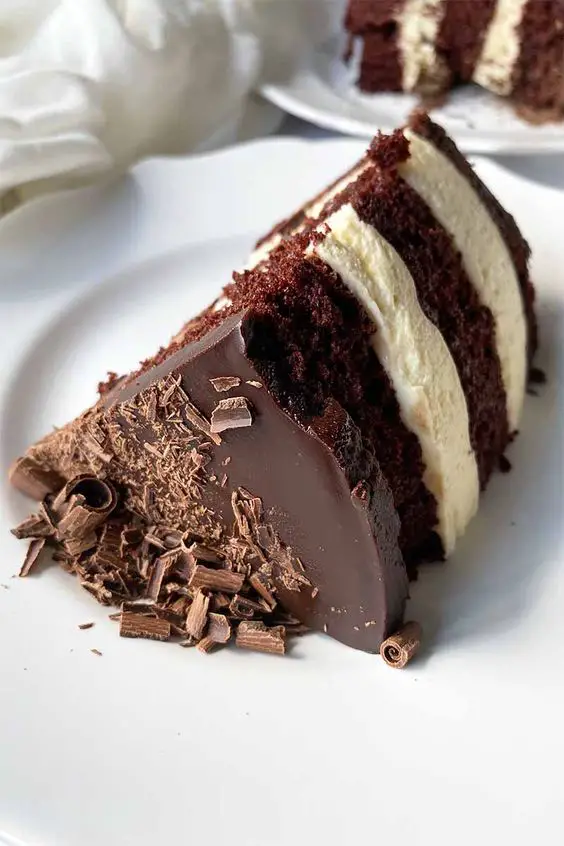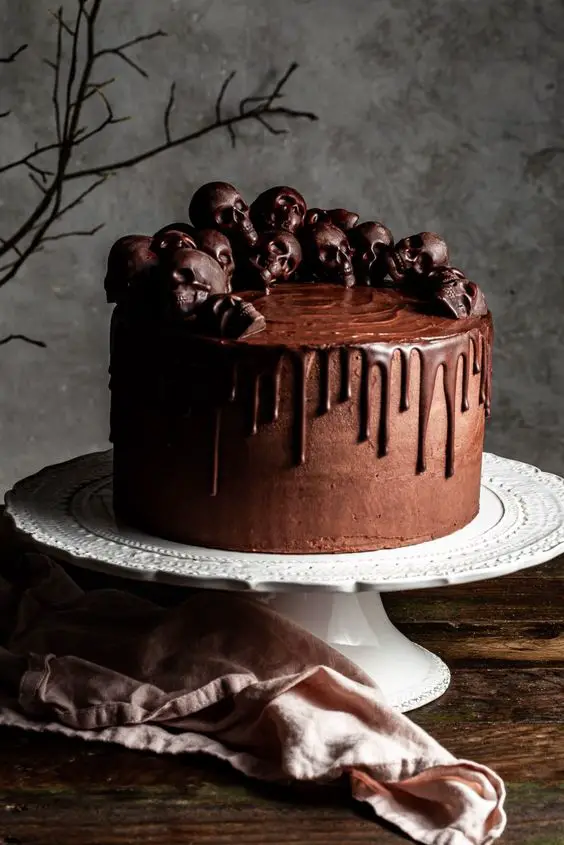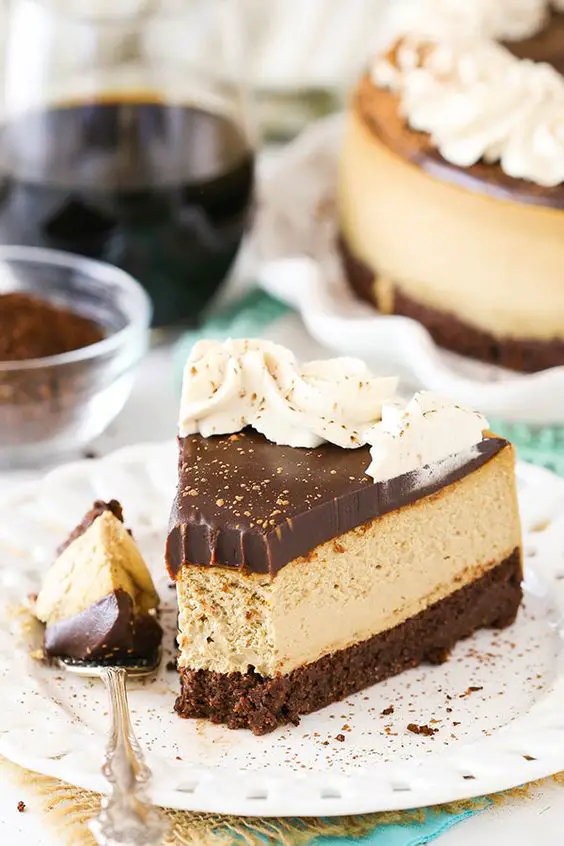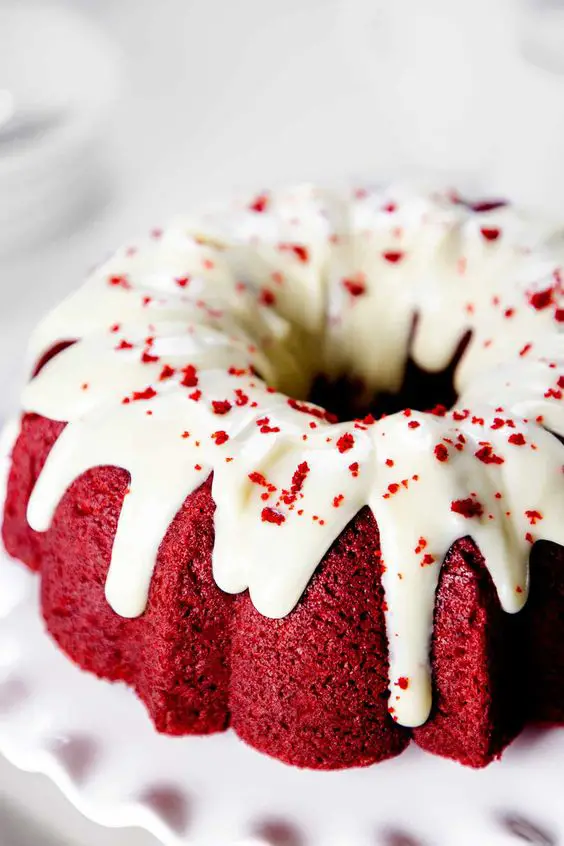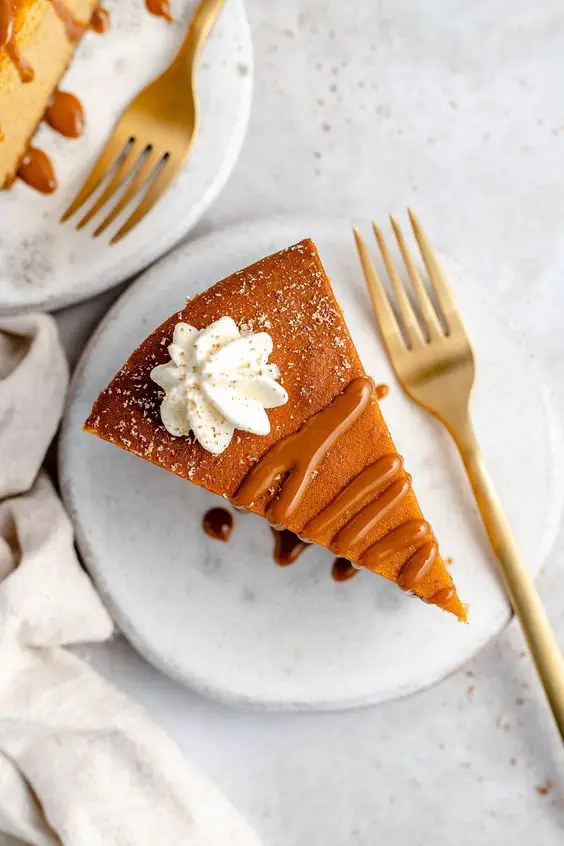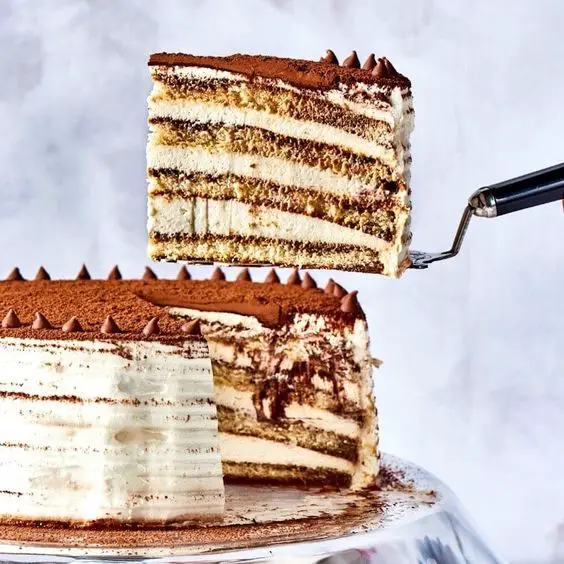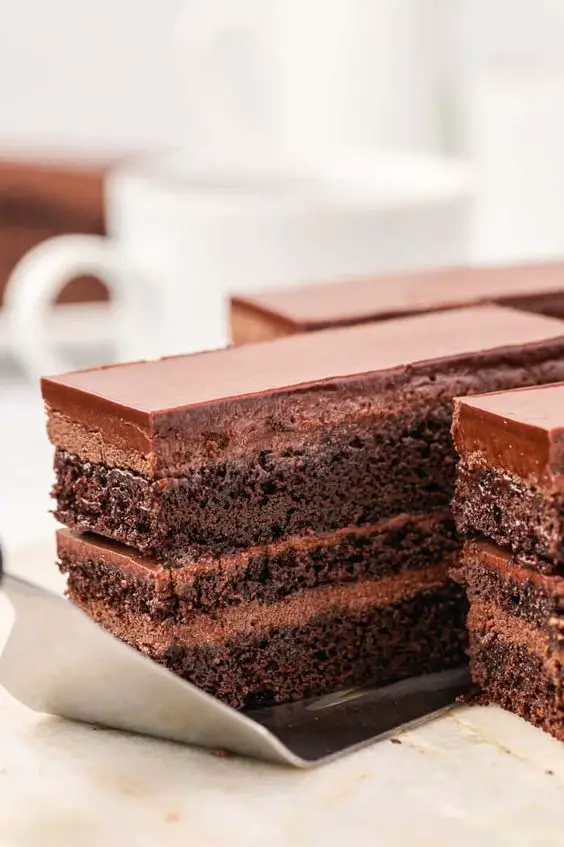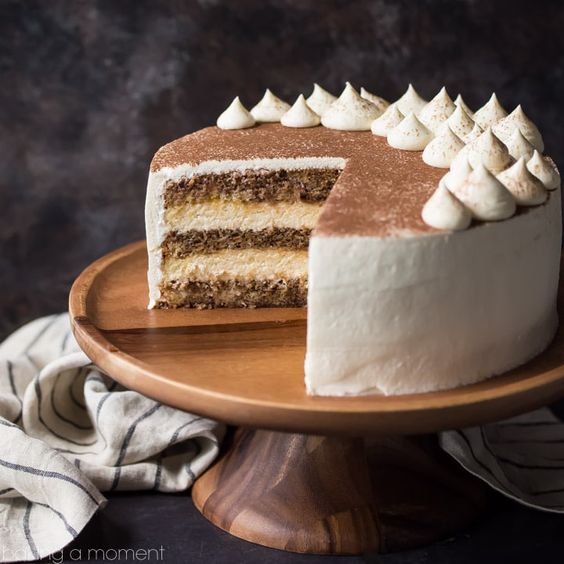French Chantilly cream, known as “crème Chantilly” in French, is a classic and luxurious dessert topping that originated in the Château de Chantilly in France during the 17th century. It is a sweetened whipped cream, enriched with a hint of flavor from ingredients like vanilla or other flavoring agents. The cream is whipped to a soft and billowy texture, creating an elegant and velvety finish that enhances the taste and presentation of various desserts.
To make French Chantilly cream, heavy whipping cream is whipped until it reaches soft peaks. Then, powdered sugar and often a touch of vanilla extract are gently folded in to sweeten and flavor the cream. The result is a delicate and light cream with a smooth consistency, perfect for adorning cakes, pastries, fruits, and other confections.
Chantilly cream adds a touch of indulgence and sophistication to desserts, making them even more delightful to the palate and the eye. Its versatility allows it to complement a wide array of desserts, from simple fresh fruits to intricate pastries, and it has become a staple in French and international dessert traditions alike.

What desserts can I use Chantilly cream with?
French Chantilly cream is a versatile dessert topping that can be used to enhance a wide variety of sweet treats. Here are some popular desserts that pair wonderfully with Chantilly cream:
- Cakes: Chantilly cream is a classic choice for layering between cake layers or dolloping on top of cakes. It adds a creamy and airy texture that complements the cake’s flavors.
- Pastries: Whether it’s puff pastry, éclairs, or cream puffs, Chantilly cream can be piped or spooned into these pastries, adding a delightful creaminess.
- Berries and Fruits: Chantilly cream is a perfect partner for fresh berries like strawberries, raspberries, and blueberries. It adds richness to the natural sweetness of the fruits.
- Pies and Tarts: Top off your favorite fruit pies or tarts with a generous dollop of Chantilly cream. It’s a wonderful contrast to the flaky crust and fruit fillings.
- Crepes: Spread Chantilly cream on delicate crepes, roll them up, and dust with powdered sugar for an elegant and delectable dessert.
- Mousse: Chantilly cream can be folded into chocolate or fruit mousses, adding a light and airy texture to the velvety mousse.
- Dessert Soups: Chantilly cream can be floated on top of dessert soups like fruit soups or chilled sweet soups, adding a creamy element to the dish.
- Waffles and Pancakes: Top your waffles or pancakes with Chantilly cream instead of traditional whipped cream for an extra-special breakfast or brunch treat.
- Trifles: Layer Chantilly cream with cake, fruits, and other fillings in a trifle dish to create a visually stunning and indulgent dessert.
- Parfaits: Use Chantilly cream as a layer in parfait cups, alternating with fruits, granola, or other fillings to create a delightful dessert in a glass.
- Mille-Feuille: Assemble layers of puff pastry and Chantilly cream for a classic French dessert known as Mille-Feuille (Napoleon).
- Floating Islands (Île flottante): Serve Chantilly cream atop a delicate poached meringue, floating in a pool of crème anglaise.
Remember, Chantilly cream can be customized by adding different flavorings or even a hint of liqueur to suit the specific dessert you’re creating. Its light and airy texture make it a wonderful companion to a wide range of sweet creations, adding a touch of elegance and decadence to every bite.
What is the difference between Chantilly cream and whipped cream?
Chantilly cream and whipped cream are both delightful dairy-based toppings, but they differ in their preparation, flavoring, and sometimes purpose. Here’s a breakdown of the main differences between the two:
1. Flavoring:
- Whipped Cream: Whipped cream is simply heavy cream that has been whipped until it reaches a fluffy and airy texture. It is often sweetened with sugar to enhance its flavor, but it typically doesn’t contain any additional flavorings.
- Chantilly Cream: Chantilly cream is a type of whipped cream that has been sweetened with powdered sugar and often flavored with vanilla extract or other flavorings. The addition of these flavorings gives Chantilly cream a distinct taste beyond just the creaminess of whipped cream.
2. Origin:
- Whipped Cream: Whipped cream is a generic term and preparation method that can be found in various culinary traditions around the world.
- Chantilly Cream: Chantilly cream specifically refers to the French version of sweetened and flavored whipped cream. It originated in Chantilly, France, giving it its name.
3. Usage and Purpose:
- Whipped Cream: Whipped cream is a versatile topping that can be used on a wide variety of desserts, including pies, cakes, hot chocolate, fruits, and more. It adds a light and creamy texture to dishes.
- Chantilly Cream: Chantilly cream is often associated with more elegant and refined desserts due to its French origin and the addition of flavorings. It is commonly used to enhance the presentation and taste of upscale pastries, cakes, and delicate desserts.
4. Texture and Stabilization:
- Whipped Cream: Whipped cream is typically whipped to either soft peaks or stiff peaks, depending on its intended use. Overwhipping can lead to the cream becoming too thick or even turning into butter.
- Chantilly Cream: Chantilly cream is generally whipped to stiff peaks to ensure it holds its shape and provides an attractive and stable topping for desserts.
5. Cultural Significance:
- Whipped Cream: Whipped cream has a widespread presence in many culinary traditions, and its usage can vary based on regional preferences and dishes.
- Chantilly Cream: Chantilly cream holds a special place in French culinary heritage and is often associated with the elegance and sophistication of French desserts.
In summary, while both whipped cream and Chantilly cream are forms of sweetened and whipped dairy cream, Chantilly cream specifically refers to the French version that is flavored and often used to elevate the presentation of more refined desserts.

French Chantilly Cream Recipe
Ingredients:
- 1 cup (240 ml) heavy whipping cream, chilled
- 2-3 tablespoons powdered sugar (adjust to taste)
- 1 teaspoon vanilla extract (or other flavorings of your choice)
Equipment:
- Chilled mixing bowl
- Electric hand mixer or stand mixer
- Whisk attachment or beaters
Instructions:
- Chill Equipment: Place your mixing bowl and beaters or whisk attachment in the refrigerator for about 15-30 minutes before you start. This helps keep the cream cold and promotes better whipping.
- Whip the Cream: Pour the chilled heavy whipping cream into the chilled mixing bowl.
- Initial Whipping: Begin whipping the cream on low speed to avoid splattering. As it starts to thicken, gradually increase the speed to medium. Whip until soft peaks start to form. Soft peaks are reached when the cream holds its shape for a moment before gently folding over.
- Add Sugar: With the mixer running, gradually add 2 tablespoons of powdered sugar. You can adjust the amount based on your desired level of sweetness. Continue whipping until the sugar is fully incorporated and the cream starts to thicken further.
- Flavoring: Add the vanilla extract (or your chosen flavorings) to the cream. Continue whipping until the cream reaches stiff peaks. Stiff peaks mean that the cream holds its shape firmly when the beaters are lifted, and the texture is smooth and creamy.
- Check Consistency: Be attentive not to overwhip the cream. It’s important to stop whipping once stiff peaks are achieved, as overwhipping can lead to a grainy texture or even the cream turning into butter.
- Serve or Store: Your Chantilly cream is now ready to use. If you’re not using it immediately, transfer it to an airtight container and store it in the refrigerator. Before using chilled Chantilly cream, give it a gentle stir or rewhip to restore its texture.
- Serve and Enjoy: Dollop or pipe the Chantilly cream onto your desired desserts. It’s perfect for adding a touch of elegance and flavor to cakes, pastries, fruits, pies, and more.
Remember that Chantilly cream is a delightful way to elevate your desserts, and you can get creative by experimenting with different flavorings to suit your taste and the specific desserts you’re preparing.
Nutrition information
The nutritional information for French Chantilly Cream can vary based on the specific quantities of ingredients used and any variations in serving size. However, I can provide you with a general estimation of the nutritional values for a standard serving of Chantilly Cream made with the provided ingredients and quantities.
Please note that these values are approximate and can vary based on factors such as the brand of ingredients used and the specific preparation method.
Nutritional Information for 1 serving of Chantilly Cream (about 2 tablespoons):
- Calories: Approximately 100-120 kcal
- Total Fat: 10-12g
- Saturated Fat: 7-8g
- Cholesterol: 40-50mg
- Sodium: 5-10mg
- Total Carbohydrates: 3-5g
- Sugars: 3-4g
- Protein: 1g
Keep in mind that Chantilly Cream is a rich and indulgent topping, so it’s important to enjoy it in moderation as part of a balanced diet.
If you need more precise nutritional information, I recommend using a nutritional calculator tool to input the exact quantities of ingredients you use and calculate the values based on your specific recipe.

How to decorate French Chantilly Cream
Decorating with French Chantilly Cream can add a touch of elegance and flair to your desserts. Here are some creative and visually appealing ways to decorate using Chantilly Cream:
- Dollops and Swirls: Use a piping bag fitted with a decorative tip to create beautiful dollops and swirls of Chantilly Cream on top of cakes, cupcakes, and desserts. You can vary the size and shape of the dollops for an artistic touch.
- Borders: Pipe Chantilly Cream along the edges of cakes and pastries to create a decorative border. This can add a refined finish to your desserts.
- Rosettes: Create intricate rosettes by piping Chantilly Cream in a spiral pattern. Rosettes can be used to adorn cupcakes, tarts, and individual desserts.
- Stars and Shells: Use a star or shell-shaped piping tip to pipe stars or shells of Chantilly Cream onto your desserts. This technique adds texture and dimension.
- Fruits and Berries: Top your Chantilly Cream with fresh fruits and berries, such as strawberries, raspberries, or blueberries. This not only adds color but also enhances the flavor.
- Chocolate Shavings: Sprinkle or arrange delicate chocolate shavings or curls on top of the Chantilly Cream for a luxurious contrast in texture and taste.
- Cocoa Powder Dusting: Lightly dust the Chantilly Cream with cocoa powder using a fine mesh sieve to create an elegant cocoa pattern.
- Caramel Drizzle: Drizzle a thin stream of caramel sauce over the Chantilly Cream for a sweet and decorative touch.
- Edible Flowers: Garnish the Chantilly Cream with edible flowers like violets, pansies, or rose petals for a visually stunning and fragrant presentation.
- Sprinkles and Confetti: Add colorful sprinkles, edible glitter, or confetti to the Chantilly Cream for a festive and celebratory look.
- Caramelized Nuts: Sprinkle chopped caramelized nuts, such as almonds or hazelnuts, over the Chantilly Cream for a delightful crunch and nutty flavor.
- Crushed Cookies: Crumble your favorite cookies, like chocolate wafers or shortbread, and sprinkle them over the Chantilly Cream for added texture and taste.
Remember that decorating with Chantilly Cream is a creative process, and you can combine multiple techniques for a unique and personalized presentation. The key is to have fun and let your imagination guide you as you adorn your desserts with this delectable French cream.
How to serve French Chantilly Cream
Serving French Chantilly Cream is a delightful experience that can elevate your desserts to a new level of elegance and flavor. Here’s how to serve Chantilly Cream for maximum enjoyment:
- Choose the Right Dessert: French Chantilly Cream pairs wonderfully with a variety of desserts. Consider serving it with cakes, pastries, tarts, fruits, pies, crepes, mousse, and more. The cream’s light and airy texture complements a wide range of sweet treats.
- Prepare Your Dessert: Ensure that your chosen dessert is ready and plated before adding the Chantilly Cream. This way, you can immediately enjoy the combination of flavors and textures.
- Dollop or Pipe: Depending on your desired presentation, you can either dollop spoonfuls of Chantilly Cream onto your dessert or use a piping bag with a decorative tip to create intricate designs. Choose a serving style that enhances the visual appeal of your dish.
- Garnish: Consider adding garnishes to enhance the overall aesthetic of the dessert. Fresh fruits, berries, chocolate shavings, edible flowers, or a sprinkle of cocoa powder can add a finishing touch.
- Serve Immediately: Chantilly Cream is at its best when served immediately after being added to the dessert. Its delicate texture and flavor are most pronounced when freshly whipped.
- Enjoy the Creaminess: As you take a bite of your dessert with Chantilly Cream, savor the creamy and airy texture that the cream adds. The subtle sweetness and any chosen flavorings will enhance the overall taste experience.
- Balance of Flavors: Chantilly Cream can be quite rich, so ensure that the sweetness of the cream complements the flavors of your dessert. The cream should enhance the dish without overpowering it.
- Customize: Feel free to customize your Chantilly Cream with different flavorings or variations to match the flavors of your dessert. Experiment with different extracts, liqueurs, or spices to create a harmonious blend.
- Store Properly: If you have leftover Chantilly Cream, store it in an airtight container in the refrigerator. Be aware that the cream’s texture may change slightly upon refrigeration, so give it a gentle stir or rewhip before using it again.
- Presentation: Pay attention to the overall presentation of the dessert. The way you present and serve Chantilly Cream can enhance the visual appeal of your culinary creation.
- Experiment: Don’t hesitate to experiment with different desserts and serving styles. Chantilly Cream’s versatility allows you to explore a wide range of serving options and combinations.
Serving French Chantilly Cream is all about enhancing the enjoyment of your desserts by adding a touch of elegance, creaminess, and flavor. Let your creativity guide you as you pair this delightful cream with your favorite sweet treats.

How to store French Chantilly Cream
Storing French Chantilly Cream properly is important to maintain its texture and flavor. Here are the steps to store Chantilly Cream:
- Refrigeration: Chantilly Cream should be stored in the refrigerator to keep it cold and safe to consume. The cream contains dairy, so proper refrigeration helps prevent spoilage.
- Airtight Container: Transfer the Chantilly Cream to an airtight container. This helps prevent the cream from absorbing odors from the fridge and keeps it from developing a dry or grainy texture.
- Label and Date: If you’re storing the Chantilly Cream for more than a day, consider labeling the container with the date of preparation. This helps you keep track of its freshness.
- Use Within a Few Days: Chantilly Cream is best when used within a couple of days. The texture can change over time, becoming slightly denser, but it will still be safe to consume.
- Re-Whip Before Use: When you’re ready to use the Chantilly Cream, give it a gentle stir or rewhip with a whisk or mixer. This helps restore its original airy and smooth texture.
- Freezing (Optional): While Chantilly Cream can be refrigerated, freezing is not recommended. Freezing and then thawing whipped cream can cause it to separate and lose its desirable texture.
- Avoid Over-Whipping: When rewhipping stored Chantilly Cream, be careful not to over-whip it. Overwhipping can lead to a grainy or butter-like consistency.
- Flavor Adjustments: If you find that the flavor of the Chantilly Cream has weakened during storage, you can gently fold in a small amount of powdered sugar and flavoring before rewhipping to enhance the taste.
Remember that Chantilly Cream is at its best when freshly prepared, so try to make only the amount you need for immediate use. Proper storage can extend its shelf life, but the texture and flavor may not be exactly the same as when it’s freshly whipped.
Tips to make perfect French Chantilly Cream
Creating the perfect French Chantilly Cream requires attention to detail and technique. Here are some tips to help you achieve the best results:
- Chill Everything: Chill your mixing bowl, beaters, or whisk in the refrigerator before you start. Cold equipment helps the cream whip faster and holds its shape better.
- Use Cold Cream: Ensure that your heavy whipping cream is cold. Cold cream whips up more easily and reaches the desired texture faster.
- Whip Gradually: Start whipping the cream on low speed and gradually increase to medium as it thickens. Avoid starting on high speed, as this can cause splattering.
- Soft Peaks First: Whip until soft peaks form before adding sugar or flavorings. Soft peaks hold their shape momentarily before folding over.
- Add Sweeteners: Gradually add powdered sugar after soft peaks form. This helps stabilize the cream and adds sweetness. Adjust the sugar amount to your taste.
- Flavor Wisely: Add flavorings like vanilla extract after adding the sugar. Start with a small amount and adjust to your preference. Other extracts, spices, or liqueurs can be used too.
- Watch for Stiff Peaks: Whip until stiff peaks form. Stiff peaks hold their shape without collapsing. Be careful not to overwhip, as the cream can become grainy or turn into butter.
- Check Consistency: Stop whipping as soon as stiff peaks are achieved. Lift the beaters to check – the cream should hold its shape, and the texture should be smooth and velvety.
- Immediate Use: Chantilly Cream is best served immediately after whipping. The texture and flavor are most pronounced when freshly made.
- Storing: If you need to store Chantilly Cream, transfer it to an airtight container and refrigerate. Re-whip gently before use to restore the texture.
- Don’t Overdo It: Avoid overwhipping, which can lead to a grainy texture or butter formation. If overwhipped, you can try to salvage it by gently folding in unwhipped cream.
- Experiment: Don’t be afraid to experiment with flavors and presentations. Chantilly Cream is versatile, so feel free to customize it to suit your desserts.
- Quality Ingredients: Use fresh, high-quality ingredients for the best results. Quality cream and flavorings contribute to a superior final product.
- Practice Makes Perfect: Whipping cream takes practice. Don’t be discouraged by initial results; with practice, you’ll master the technique and achieve consistently excellent Chantilly Cream.
By following these tips and practicing your technique, you’ll be able to consistently create perfect French Chantilly Cream to enhance a wide variety of delicious desserts.

FAQs about French Chantilly Cream:
- What is French Chantilly cream? French Chantilly cream is a light and airy dessert topping made by whipping heavy cream, sugar, and often vanilla extract. It originated in Chantilly, France, and is commonly used to enhance the flavor and texture of various desserts.
- What desserts can I use Chantilly cream with? Chantilly cream is a versatile topping that complements a wide range of desserts, including cakes, pies, tarts, fruits, crepes, and pastries.
- How do I make Chantilly cream? To make Chantilly cream, whip cold heavy cream with a whisk or mixer until soft peaks form. Gradually add powdered sugar and vanilla extract while continuing to whip until the cream holds its shape and forms stiff peaks.
- Can I flavor Chantilly cream differently? Absolutely! While vanilla is a classic flavor, you can experiment with other extracts like almond, citrus zest, or even incorporate cocoa powder, coffee, or liqueurs to create various flavor profiles.
- What is the difference between Chantilly cream and whipped cream? Chantilly cream is essentially a type of whipped cream. The term “Chantilly cream” is often used to refer to sweetened whipped cream flavored with vanilla, but it can also include other variations.
- Can I make Chantilly cream ahead of time? Yes, you can make Chantilly cream ahead of time. It’s best to store it in the refrigerator in an airtight container. However, re-whip the cream lightly before using it to restore its texture.
Troubleshooting Common Issues:
- Why isn’t my Chantilly cream thickening? If your Chantilly cream isn’t thickening, it might be due to using cream that’s not cold enough or overwhipping the cream. Start with chilled cream and avoid overwhipping, as this can cause the cream to turn into butter.
- My Chantilly cream has become grainy. What went wrong? Grainy Chantilly cream can result from overwhipping the cream or using powdered sugar that isn’t fully dissolved. Ensure your cream is just whipped to stiff peaks and that the sugar is well incorporated.
- Can I fix overwhipped Chantilly cream? If you’ve overwhipped your Chantilly cream, it might turn into butter. To salvage it, you can gently fold in some fresh unwhipped cream until you achieve the desired texture.
- Why did my Chantilly cream deflate? Chantilly cream can deflate if it’s overwhipped or if it’s not stabilized enough. Be sure to whip the cream to stiff peaks and consider adding stabilizers like gelatin or cornstarch if you need the cream to hold its shape for an extended period.
- My Chantilly cream has a weird taste. What could be the cause? A strange taste might be due to using spoiled cream, expired ingredients, or overmixing the cream. Always use fresh, quality ingredients and avoid overwhipping.
Remember that practice makes perfect when it comes to mastering the art of making French Chantilly cream. Adjust your techniques and ingredients as needed to achieve the desired results for your delectable desserts.
Happy baking!


